The car-size Perseverance rover launching to Mars on July 30 is the heaviest and largest rover NASA has ever sent to the red planet.
The plan for the Perseverance rover mission has unfolded over the last 10 years. It’s the next step in understanding the history of Mars and if ancient life once lived on the surface.
But like all ideas, it started out as a concept on paper. Scientists and engineers have brought it to life, building it from the ground up and equipping it with new features and instruments that stand out from the previous rovers.
And artists have illustrated that journey along the way. Here’s a timeline of the rover, from early days to preparing for launch, through the work of artists at NASA.
Scott Hulme, one of the leads for NASA’s Mars Public Engagement team, created the first sketch of the Mars 2020 rover, the original name before it became Perseverance. Based on the earliest, basic 3D graphics depicting the rover design, that sketch was used to announce the next generation of rover that would explore Mars.

Joby Harris, artist and visual strategist at The Studioat NASA’s Jet Propulsion Laboratory in California, has worked under the direction of Hulme and team co-leader Carolina Carnalla-Martinez on artwork and design supporting the Perseverance mission for the last five years.
Harris, along with other artists and designers in The Studio, collaborated with scientists and engineers at NASA to discuss rover imagery, angles of the rover and even images of Mars to use in landscape renderings.
Harris is part of a small design team that sits within an organization called 18x along with communicators, educators, news, film, photography and social media experts, he said.
Much of the team’s work is used for public engagement to let people know about upcoming missions and their capabilities, envisioning the rovers and what they will do before they’re on Mars.
These included several campaigns, such as “Send Your Name to Mars,” which encouraged people to submit their names for inclusion on chips carried by the rover and the “Name the Rover” contest, which invited students from kindergarten through 12th grade to share name ideas and essays supporting their choices.
Harris designed the ticket, which used a rover image by NASA HQ art director Jenny Mottar. The image was based on an early design, so it shows four navigation cameras, like those on Curiosity. Now, Perseverance has two navigation cameras.
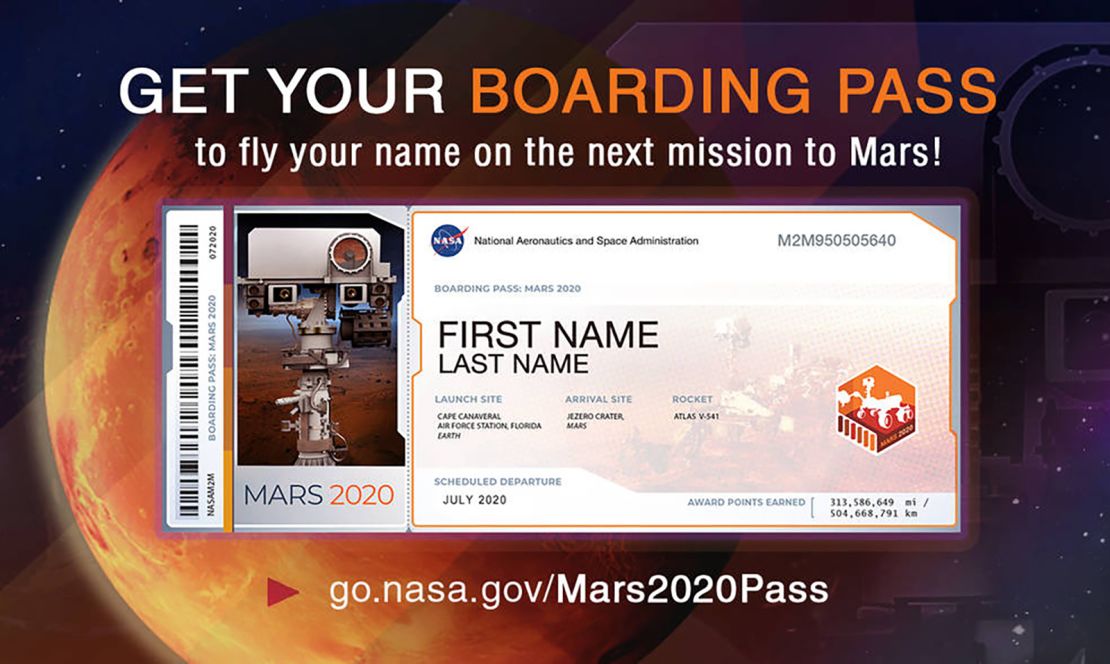
The kid-friendly design for the “Name the Rover” campaign was based on Curiosity rover art drawn by Alexander Novati, kids programming Space Place team artist at NASA. Curiosity’s rover artwasupdated to show the design for Perseverance.
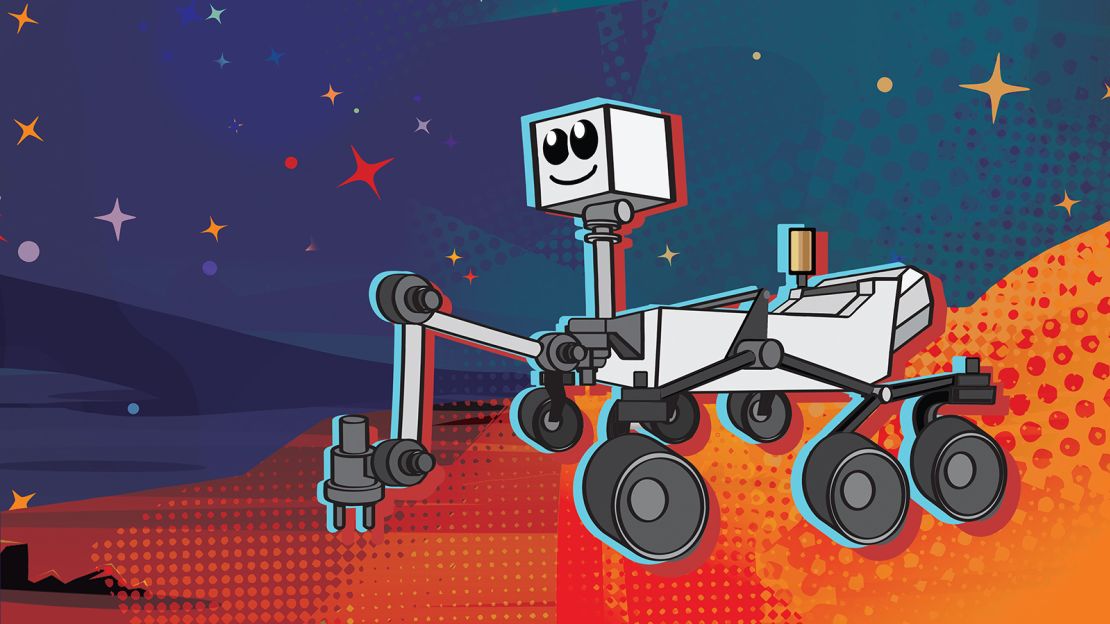
As the design of Perseverance changed many times over the years, Hulme and sometimes Harris updated the renderings of the rover shared with the public.
This illustration is based on a 3D rendering by animator Kevin Lane.

Once the names were gathered to include on Perseverance’s chips, which will take 10.9 million names to Mars, Harris and Studio design team members David Delgado, Lois Kim and public engagement team member Kaitlyn Soares created a line art design for the plate holding the chips.
“The design shows Earth and Mars and how – no matter the distance apart – we are connected by the same star and light,” Harris said. “As a team we brainstormed what message we could include in this plate in Morse code and came up with ‘EXPLORE AS ONE’ around the sun in its rays. This plate appears on the top of the rover.”
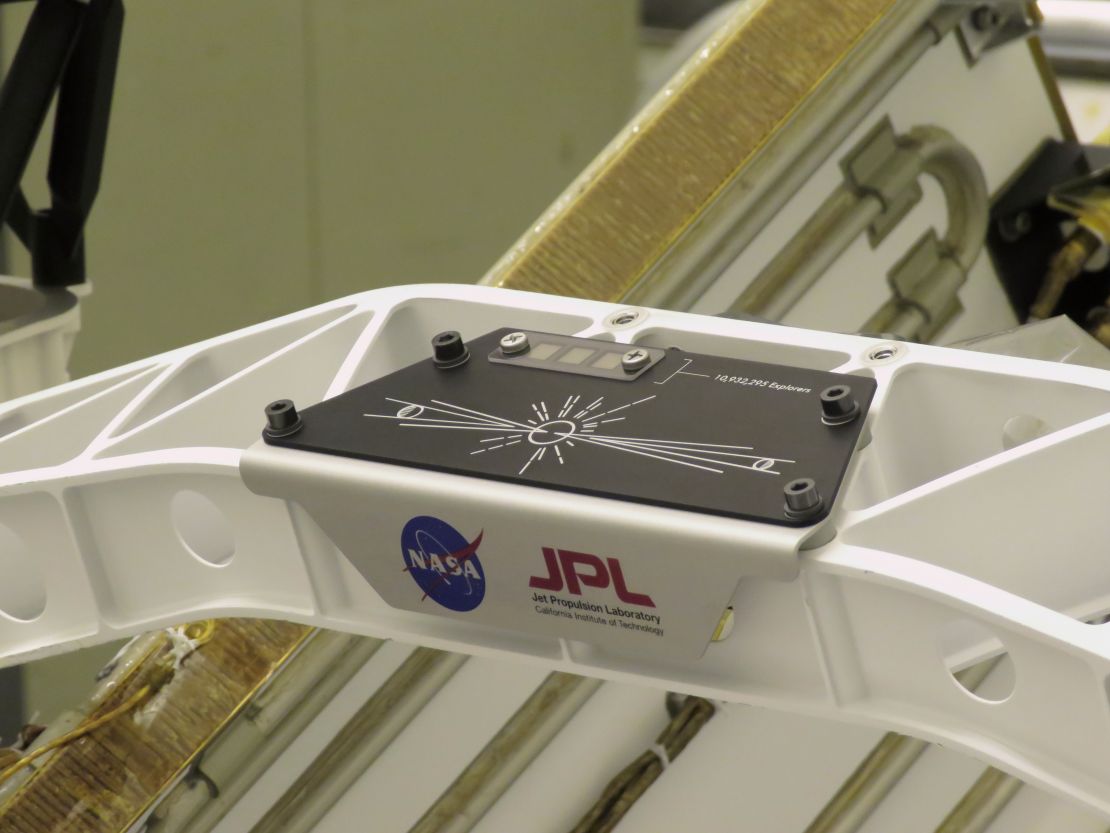
Now, the rover is ready to launch. Harris was asked by the Mars Public Engagement team to create the look and feel that will be associated with the launch and this mission through creative branding.
“I really felt the need to keep things simple and with space to breathe,” Harris said. “I kept things to a simple gradient, almost appearing as a water color painting to give it a sense of a raw human organic depiction of what’s to come.”
As with previous Mars missions, they used blue and red to symbolize Earth and Mars.

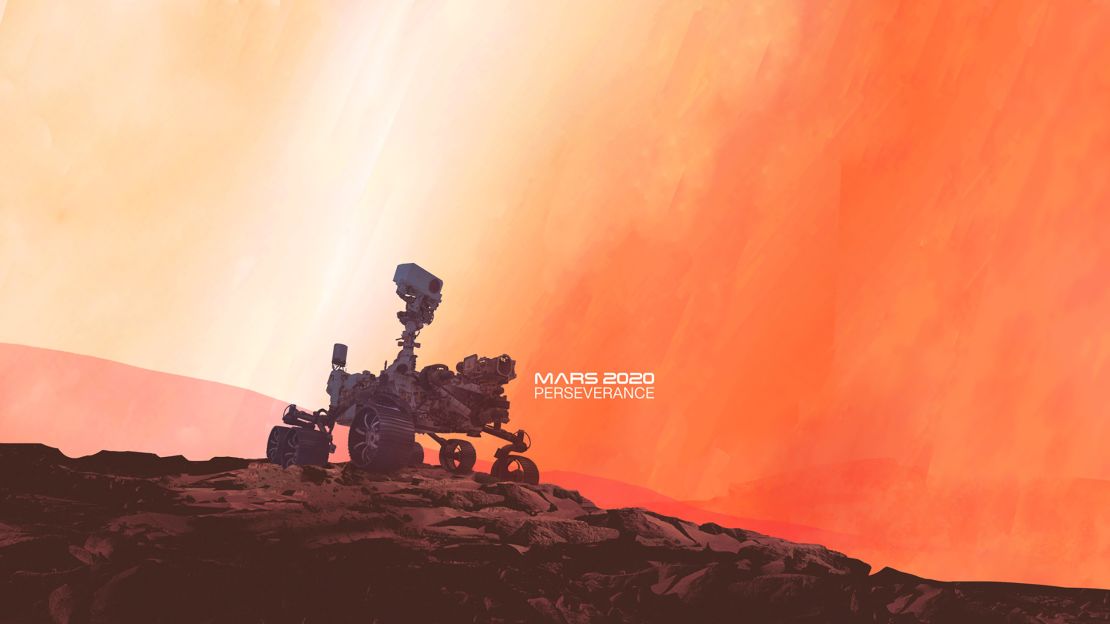
And one of Harris’ 2016 creations predicts a future for humans on Mars. Harris was asked by a group at JPL, led by John Baker and Hoppy Price, to imagine what a human presence would look like on Mars. It was recently released by JPL.
Modeled on “out of the tent” perspective shots that are so popular on social media, it shows the view of one astronaut looking through a portal window at another astronaut taking a moment to enjoy the view on Mars.
“I wanted to connect this piece to the more human aspect of who we are — but on Mars,” Harris said. “Elements that we will also need — like a warm cup of coffee next to a window, seeing a colleague overlooking a beautiful canyon in the morning light with a glimpse of the activity of others in the distance. We will need connection to people, to pause, to rest and admire beauty – which will be just as important as working.”
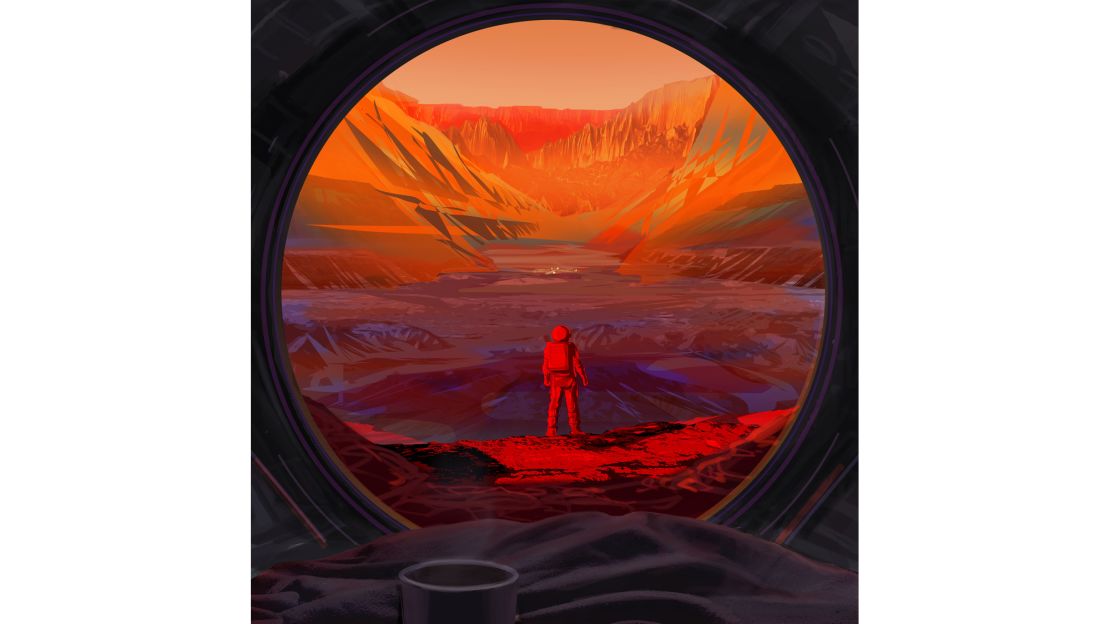
For Harris, the launch is the culmination of supporting the Perseverance mission for the last five years.
“This is the first mission that I feel I was at the beginning, from birth to sending off,” he said. “It’s is a hopeful moment for all of us.”

Harris supports other missions as well and enjoys producing work that support a “universal language.”
“A visual image from JPL and NASA of what the future could possibly look like speaks to all ages, education levels and ethnicities at one time, leaving room for interpretation and personalization,” Harris said.
“Data and facts are like a presentation to people where they sit and learn. Artwork is a conversation. It’s connecting data and facts to emotion and leaving room for them to be a part of the story and solution in their own unique way.”





